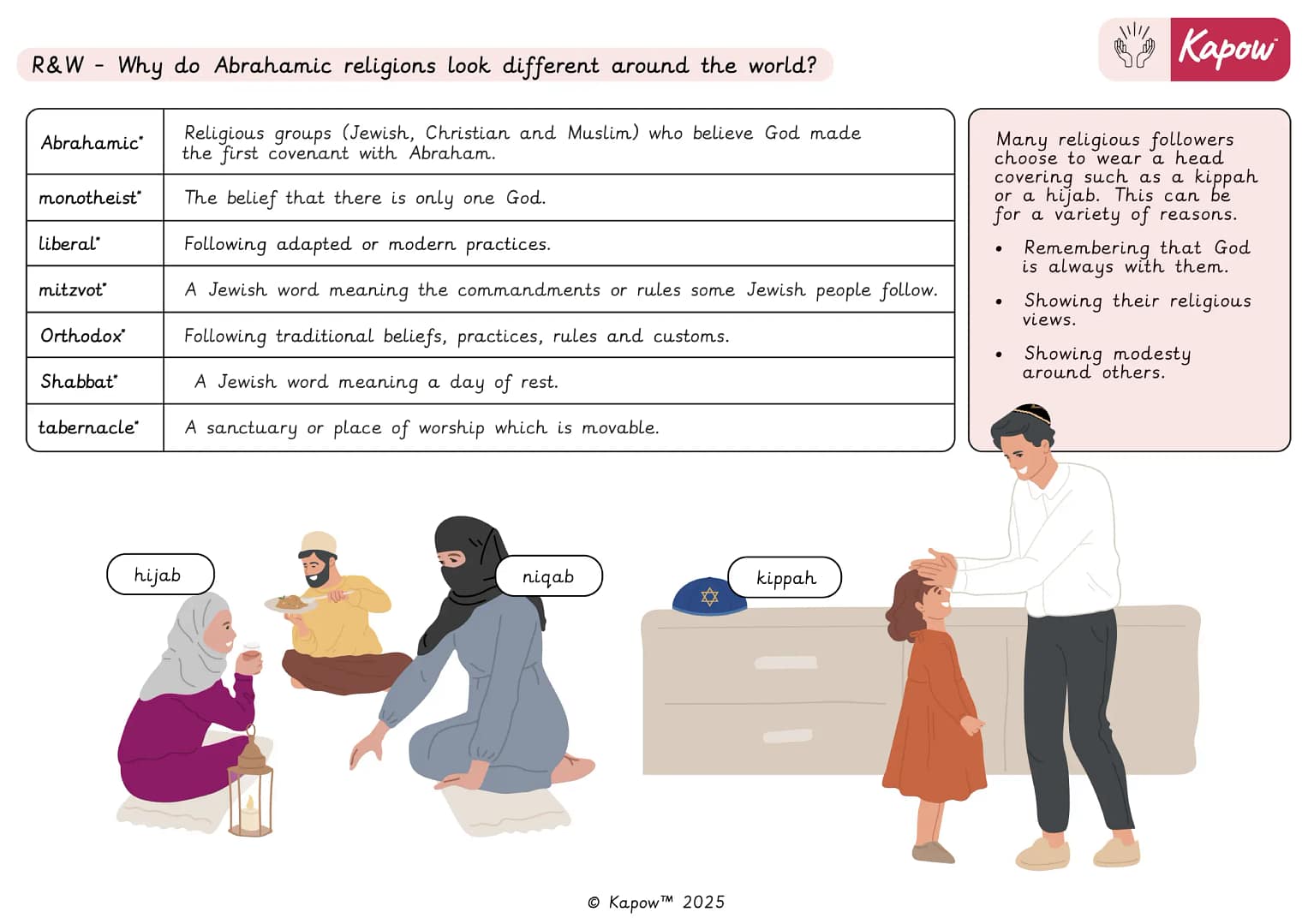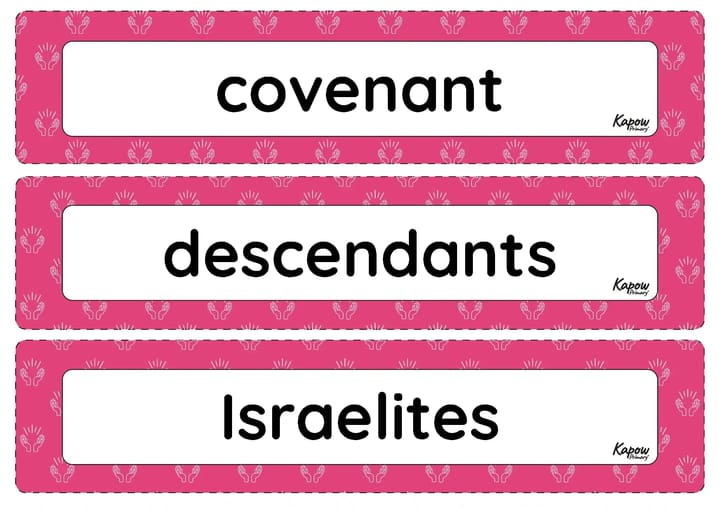Y5/6 (B): Why do Abrahamic religions look different around the world?
Comparing the Abrahamic religions and discovering how some practices are observed.
The Curriculum and Assessment Review final report has been released. We’re reviewing the recommendations and planning for future updates. Learn more
- Subjects >
- Religion and worldviews >
- Mixed-age >
-
Y5/6 (B): Why do Abrahamic religions look different around the world?
Unit outcomes
Pupils who are secure will be able to:
- Identify key similarities and differences between Jewish, Muslim and Christian beliefs about Abraham.
- Compare the ways some Jewish people observe Shabbat.
- Make links between a traditional Jewish meal and a denomination.
- Describe how a kippah can reflect someone’s beliefs or identity within the Jewish community.
- Identify reasons why someone might wear a hair covering.
- Explaining how some Christian teachings link to beliefs and practices in different communities.
Suggested prior learning
Y5/6 (B): Why are some places in the world significant to believers?
Get startedLessons
Y5/6 (B): Lesson 1: Why do some religions believe in the same God?
- To identify the similarities and differences between some Abrahamic religions.
Y5/6 (B): Lesson 2: How might a Jewish person observe Shabbat?
- To identify how some religious practices change over time by exploring Jewish mitzvot.
Y5/6 (B): Lesson 3: Why is Friday night dinner different?
- To explain reasons why traditions can vary within a religion.
Y5/6 (B): Lesson 4: What can a head covering tell us about identity?
- To recognise how some religious practices are influenced by culture.
Y5/6 (B): Lesson 5: Why might someone want to cover their hair?
- To use scripture and lived experience to discuss why someone may choose to cover their hair.
Y5/6 (B): Lesson 6: How can scripture be expressed?
- To identify similarities between Christian teachings and cultural practices around the world.
Key skills
Key knowledge
Related content
Unit resources

Y5/6 (B): Why do Abrahamic religions look different around the world?
Aimed at pupils, a double page document that gives key facts and definitions from the 'Why do Abrahamic religions look…

Vocabulary display – R&W Y5/6 (B): Why do Abrahamic religions look different around the world?
A display version of the vocabulary from the 'Why do Abrahamic religions look different around the world?' unit.
Cross-curricular opportunities
British values: Mutual respect, Tolerance of those with different beliefs.
English: Reading – comprehension, Writing – transcription.
Geography: Human and physical geography.

